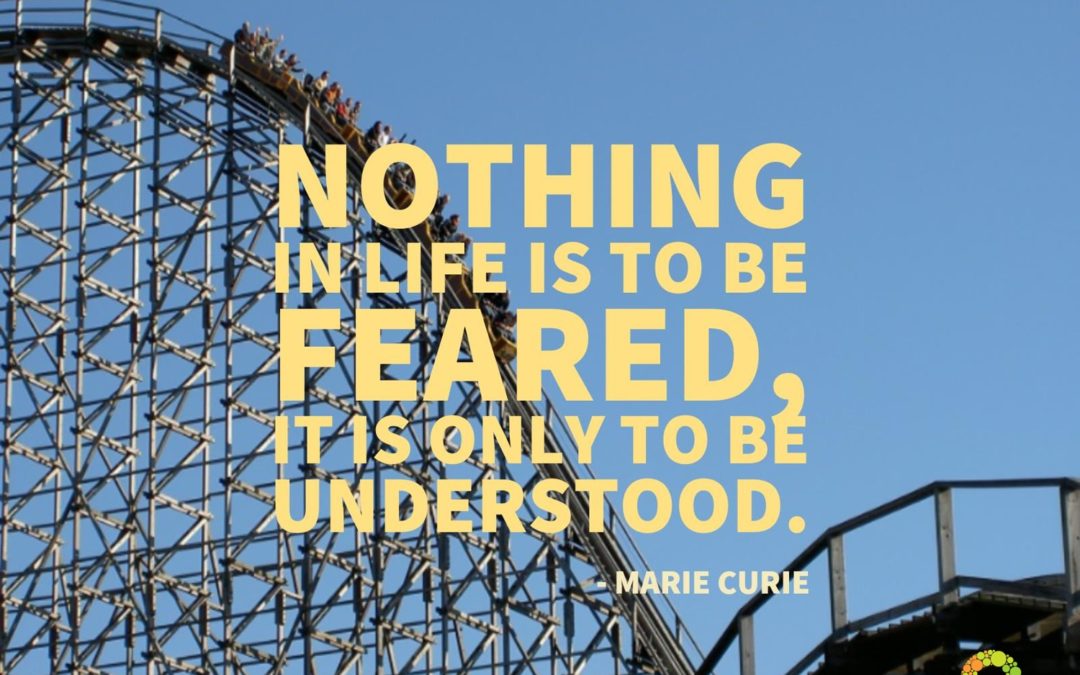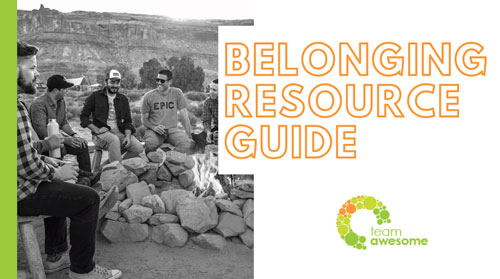I have found through coaching many high-achievers, as well as reflecting on my own experiences, that much of the feelings of anxiety or feeling trapped have to do with fear of one thing in particular: the future. When we feel shame and regret, we are ruminating on the past and what we wish we would have done different. But when we feel fear and anxiety, that is trepidation in anticipation of what might happen in the future. If we are planners and thinkers, as many introverts are, then we can expend an inordinate amount of energy considering all possible future outcomes, identifying worst-case scenarios, and if we let our minds run amuck attaching fear and anxiety to what might happen.
I frequently felt fear of the future. In fact, I was trapped in it. I was always waiting to be found out, for the other shoe to drop, and for the bottom to fall out of my successes. I didn’t even realize that I was doing it. I would feel it about work (fear of being “found out” as a fraud), as a parent (fear of anything bad happening to my child), and in my daily life (fear that I “should” be doing something). The first step in pulling back to the present and out of the fear of the future was awareness. And once I could recognize the fear in the moment, often in the form of a “what if,” I could do something tactical to bring my focus back to the present and remove the power of the fear.
Here are a few recent models for dealing with fear of the future that are worth sharing, and may be helpful on your quest to get back to the present tense.
Fear-Setting (Tim Ferriss)
Earlier this year, Tim Ferriss delivered his TED Talk “Why you should define your fears instead of your goals” on the main stage about fear and introduced the idea of “fear-setting.” It is the practice of defining your fears, planning in advance what can be done to prevent them, and should they actually occur, what can be done to repair them. By doing this planning, it takes the mystery out of what could happen and it diminishes its power to make you feel afraid of the unknown.
We often fear the future in a way that turns out to be much worse than what actually happens in reality. Either we assume a worst-case scenario and that doesn’t turn out to be true, or our anxiety over what we think may happen is grossly inflated to if that thing actually happened. That means that a lot of the anxiety we create for the future is our own, and unnecessary.
To complete fear setting, Tim suggests that you make a list of all of the things that you are afraid of. Then, write what can be done to prevent them in the next column. In the third column, write what you would do if that fear actually happened. Now, you have a plan.
Pre-Traumatic Growth (Adam Grant and Sheryl Sandberg)
After Sheryl Sandberg’s husband unexpectedly died in 2015, her journey back to joy through resilience was the impetus for her second book, Option B, which she co-wrote with psychologist and Wharton professor Adam Grant, PhD. In conducting research for this book, the concept of post-traumatic growth came up as they saw time and time again that there was often positive personal growth that came out of traumatic situations. People embraced more gratitude, strengthened relationships with friends and family, or started living life to the fullest following a traumatic incident or loss. So, Sheryl suggested, why can’t we have pre-traumatic growth? We can experience the growth without the trauma. To start, we can make a list of all of the things that might go wrong, and then check for those things in advance to prevent them (not unlike Fear-Setting). Or perhaps begin practicing gratitude before a crisis causes it.
The 5-Second Rule (Mel Robbins)
Mel Robbins, author of The 5-Second Rule, describes how we often have instincts or urges to take action on something, but within five seconds our brain will try and convince you otherwise and derail your initial instinctual plan. This comes from fear of what might happen, fear of the unknown, and is your brain’s way of protecting you from something that is out of your norm. The premise is that when you are faced with an urge to act, is to count, “Five, four, three, two, one” and then physically move in some way.
Beyond these tactics of reducing the fear of the future, another activity to stave off this curse is to focus your energy around the present. By focusing on and fearing future states, we rob the present of the attention that it deserves, and the time spent with the joy of now. Here are some simple practices that you can do any day to stay anchored in the present:
- Meditation and centering: Take even 60 seconds to bring yourself back to focus
- Intention setting: Begin the day or an activity by setting the intention and take a more direct path to where you are going
- Mindfulness exercises: Practice little “experiments” in staying present as you go through your day
- Allowing for blank space: Plan blank space in your day just like you would any other important meeting
What “what ifs” are you holding on to? And what would happen if you replaced that fear of what might happen with a focus on the reality of the present?
About the author:
Katie Rasoul is the Chief Awesome Officer for Team Awesome, a leadership coaching and culture consulting firm. Find out more by visiting www.teamawesomecoaching.com or sign up for our mailing list for awesomeness coming straight to your inbox. Follow Team Awesome on Facebook and Twitter.



So how does one deal with a life ending diagnosis. Or the almost certain impending prognosis?
Lionel, that is understandably really challenging. Without a doubt I would recommend finding people to help process the magnitude of that information, including professionals who can understand, empathize and share perspective. Ultimately, the choice is how you choose to live every inch of the time you have in the present, versus expending energy into what “might” happen in the future. Sending love and energy your way.